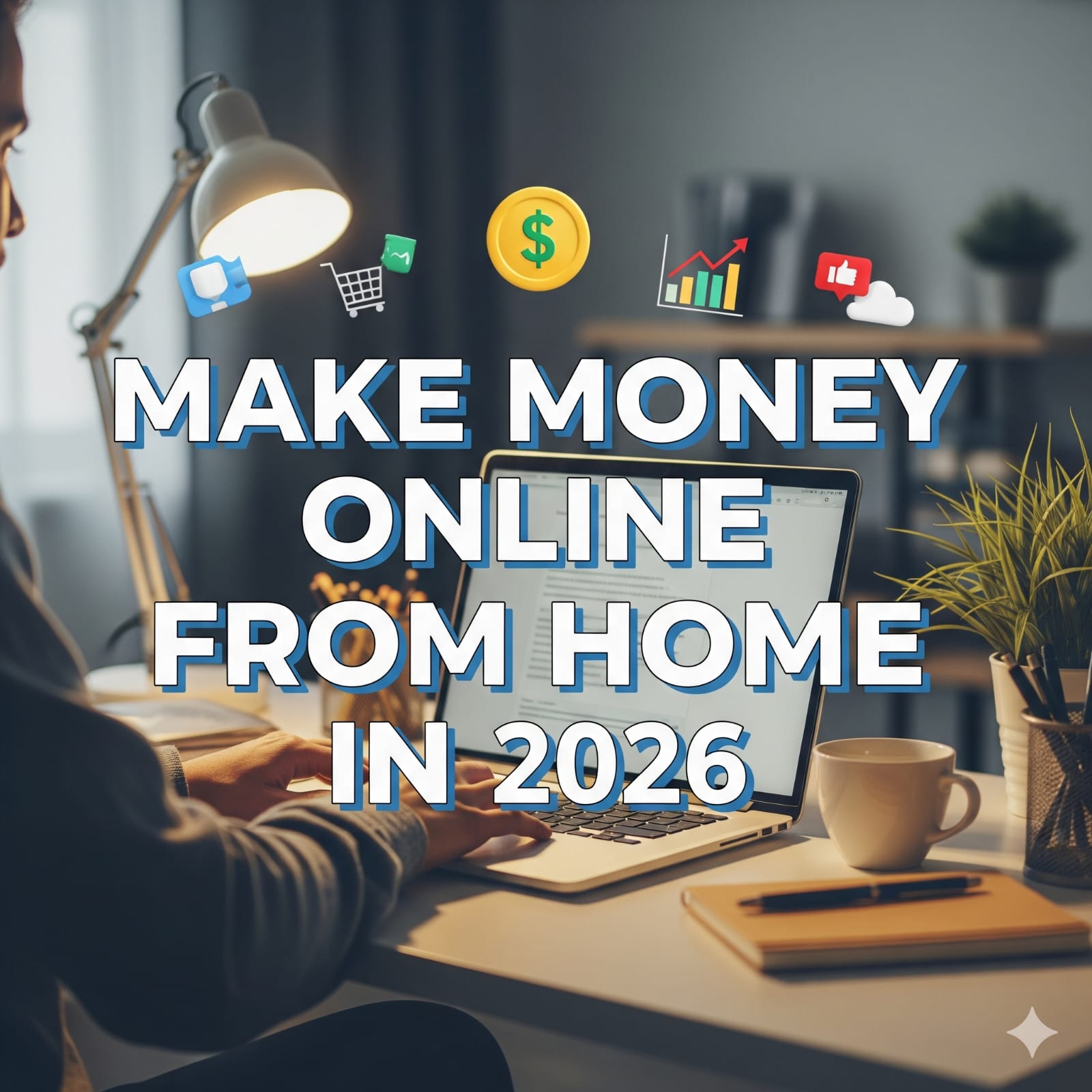Table of Contents
How to Start Freelancing in 2026: Step-by-Step Beginner’s Guide
How to Start Freelancing in 2026 – The world of work is changing faster than ever, and freelancing has become one of the most powerful ways to earn money, build skills, and create financial freedom. With remote work culture growing and digital platforms expanding, 2026 is the best time to start freelancing.

If you’ve ever asked yourself, “How can I start freelancing with no experience?” or “What skills do I need to become a freelancer in 2026?”, this blog is for you.
📌 What is Freelancing?
Freelancing means working independently for clients or companies without being tied to a long-term contract. Freelancers are self-employed and offer services like content writing, graphic design, digital marketing, web development, video editing, or consulting.
In 2026, freelancing is no longer just a side hustle—it’s a full-time career option. Platforms like Upwork, Fiverr, Toptal, and Freelancer have millions of clients looking for talented professionals every single day.
📌 Why Start Freelancing in 2026?
- Global Demand is Rising – Businesses are hiring freelancers for cost-effective and flexible solutions.
- Remote Work Trend – Post-2020, companies continue to prefer remote teams.
- Multiple Income Streams – Instead of depending on one job, freelancers can work with many clients.
- Skill-based Earnings – You don’t need a degree; skills like content creation, coding, or marketing can help you start.
- Freedom & Flexibility – Work from home, set your own hours, and choose your projects.
📌 Step-by-Step Guide: How to Start Freelancing in 2026
1. Identify Your Skills
Ask yourself: “What service can I offer that solves a problem for others?”
- Creative skills: Content writing, graphic design, video editing, UI/UX design.
- Technical skills: Web development, app development, AI/ML projects, data analysis.
- Marketing skills: SEO, social media management, paid ads, affiliate marketing.
- Consulting skills: Career coaching, financial advice, business strategy.
💡 Tip: Start with skills you already have. For example, if you’re good at social media, offer social media management services.
2. Choose Your Niche
In 2026, freelancing is competitive. Niching down makes you stand out.
Examples:
- Instead of “content writing,” choose “SEO-friendly blog writing for tech startups.”
- Instead of “graphic design,” choose “branding and logo design for small businesses.”
👉 The more specific you are, the easier it is to attract clients.
3. Build a Strong Portfolio
Clients hire freelancers based on proof of work. If you’re new and don’t have clients yet, create sample projects.
- Writers: Write 3–5 blog samples in your niche.
- Designers: Create mock logos, social media posts, or website designs.
- Developers: Build small demo projects or apps.
💡 Use free tools like Canva, Notion, Behance, GitHub to showcase your work.
4. Set Up Professional Profiles
Freelance platforms are where you’ll find your first clients.
- Fiverr – Great for beginners, clients search for gigs.
- Upwork – Best for long-term projects, apply to jobs.
- Freelancer.com – Competitive but full of opportunities.
- Toptal – High-end platform for experienced professionals.
Your profile should include:
✅ A professional photo
✅ A clear bio with your skills and niche
✅ Portfolio samples
✅ Keywords for SEO (example: “SEO Content Writer | Blog Writing | Freelance Copywriting”)
5. Decide Your Pricing Strategy
Many beginners ask: “How much should I charge as a freelancer?”
- Beginner level: Start with competitive pricing to attract clients (e.g., $5–$10 for small gigs).
- Intermediate: Once you gain reviews, increase rates (e.g., $20–$50 per project).
- Expert level: Charge premium rates (e.g., $100+ per project) for specialized services.
💡 Pro tip: Don’t underprice yourself for too long. Gradually raise your rates as you build experience.
6. Start Networking & Personal Branding
In 2026, freelancing is not just about platforms—it’s about building your personal brand.
- Use LinkedIn to connect with professionals and share your work.
- Use Instagram & YouTube to showcase your skills (content marketing works!).
- Join freelancer communities on Facebook, Reddit, or Discord.
👉 Networking brings clients directly to you, instead of waiting for them on platforms.
7. Pitch & Apply for Jobs
When applying for projects:
- Personalize every proposal.
- Keep it short but show value.
- Mention how your skill solves their problem.
Example Pitch:
“Hi [Client Name], I specialize in writing SEO-friendly blogs for startups. I noticed your website could benefit from content that ranks better on Google. I’d love to create high-quality blogs that increase your traffic. Here are some samples of my work. Looking forward to working with you.”
8. Deliver Quality Work & Build Relationships
Your first 5 clients will shape your freelancing career. Always:
- Deliver before deadlines.
- Communicate regularly.
- Offer extra value (like small suggestions for improvement).
👉 Happy clients = repeat projects + 5-star reviews.
9. Manage Finances & Taxes
As a freelancer, you’re your own boss—meaning you must handle payments and taxes.
- Use PayPal, Payoneer, Wise, Stripe for international clients.
- Keep track of income & expenses using tools like Wave, Zoho Books, QuickBooks.
- In India, freelancers should register under GST (if applicable) and file taxes properly.
10. Keep Learning & Upskilling
Freelancing evolves every year. In 2026, AI tools are changing the game—freelancers who adapt and learn will always win.
- Writers must learn AI-assisted content tools like Jasper or Copy.ai.
- Designers should explore AI-based design tools.
- Developers should stay updated with Web3, AI, and blockchain technologies.
👉 The more you upskill, the higher you can charge.
📌 Common Mistakes Beginners Should Avoid
❌ Accepting every project without checking client credibility.
❌ Underpricing for too long.
❌ Not setting clear boundaries (revisions, deadlines, payments).
❌ Ignoring personal branding and depending only on platforms.
❌ Quitting too early—freelancing requires patience.
📌 Future of Freelancing in 2026 and Beyond
- AI + Freelancers = Super Productivity – AI won’t replace freelancers, but freelancers using AI will replace those who don’t.
- Remote-first world – More companies will outsource to freelancers globally.
- High-demand skills – AI prompt engineering, AR/VR design, cybersecurity, blockchain, digital marketing.
- Earning potential – Freelancers can earn from $500/month to $10,000+/month depending on skills and consistency.
📌 FAQs About Freelancing in 2026
Q1. Can I start freelancing without experience?
Yes! Start with skills you already know and build a sample portfolio. Many clients hire beginners with strong motivation.
Q2. How much can a beginner freelancer earn in 2026?
A beginner can earn between $100–$500/month initially, and gradually scale to $1000+ with consistent clients.
Q3. What skills are best for freelancing in 2026?
Content writing, SEO, video editing, web/app development, digital marketing, AI integration, and social media management.
Q4. Is freelancing better than a job?
It depends. Freelancing gives freedom and flexibility but also requires discipline. Many professionals combine freelancing with jobs for extra income.
Q5. How do I get my first freelancing client?
Create a strong profile, add sample work, apply for small gigs on Fiverr/Upwork, and network on LinkedIn.
📌 Conclusion
Starting freelancing in 2026 is one of the smartest career moves you can make. Whether you’re a student, housewife, or working professional, freelancing gives you the freedom to earn from your skills, work from anywhere, and grow on your own terms.
The key is simple: identify your skills → choose a niche → build a portfolio → start small → keep learning → scale big.
So, if you’ve been waiting for the right time to start freelancing—2026 is your year!


